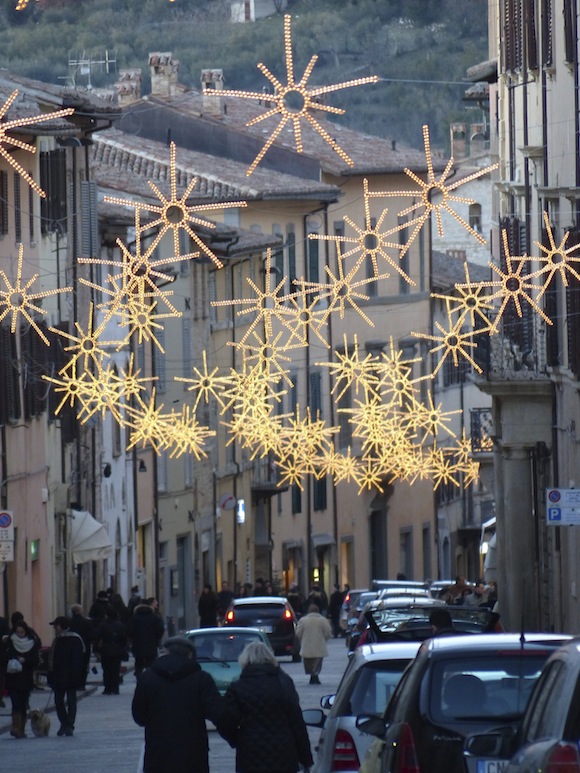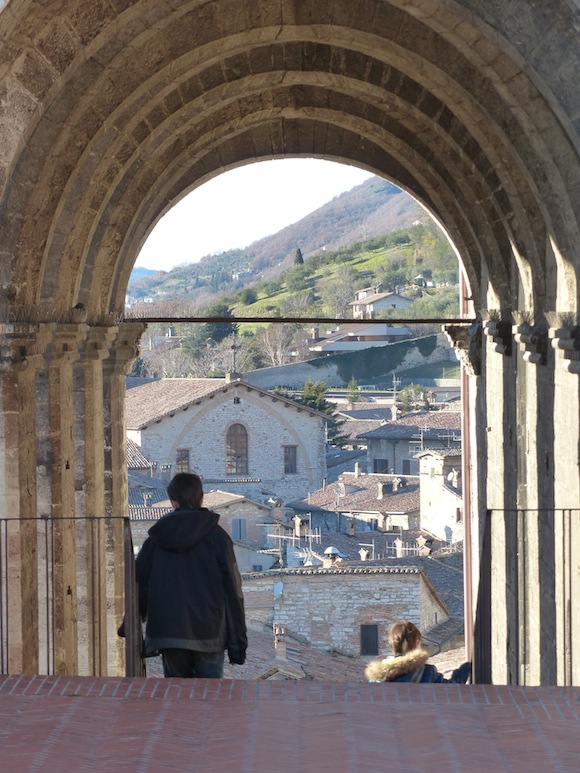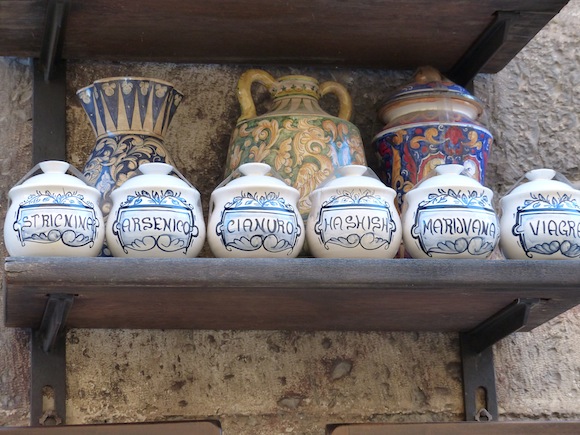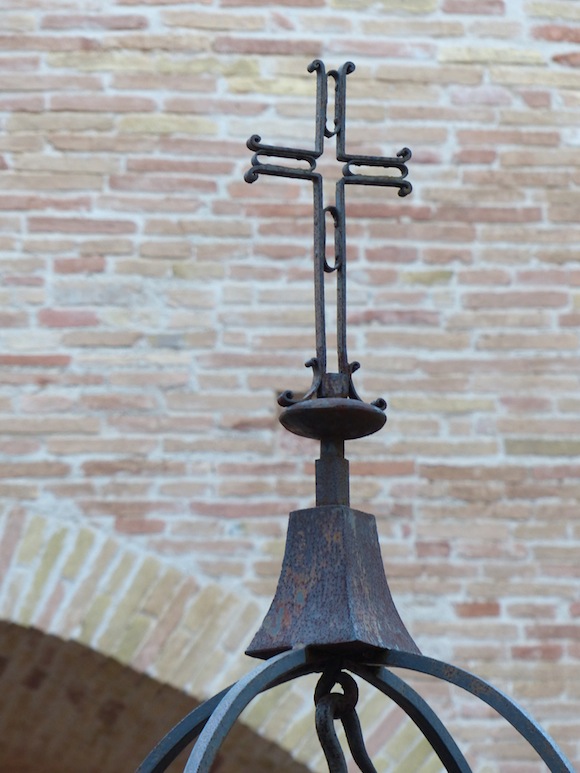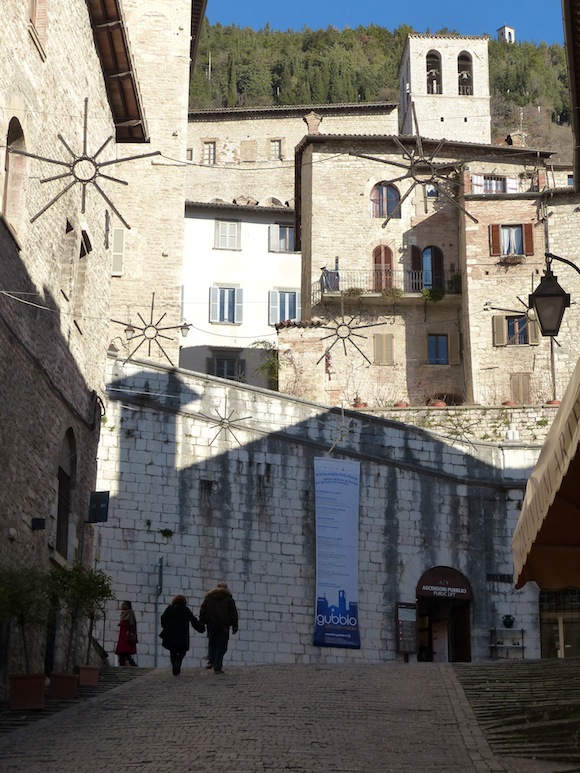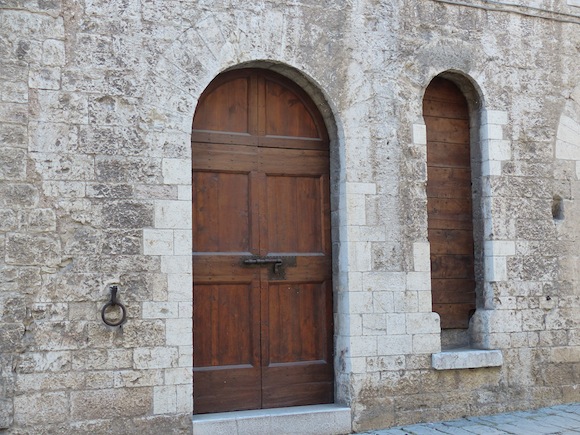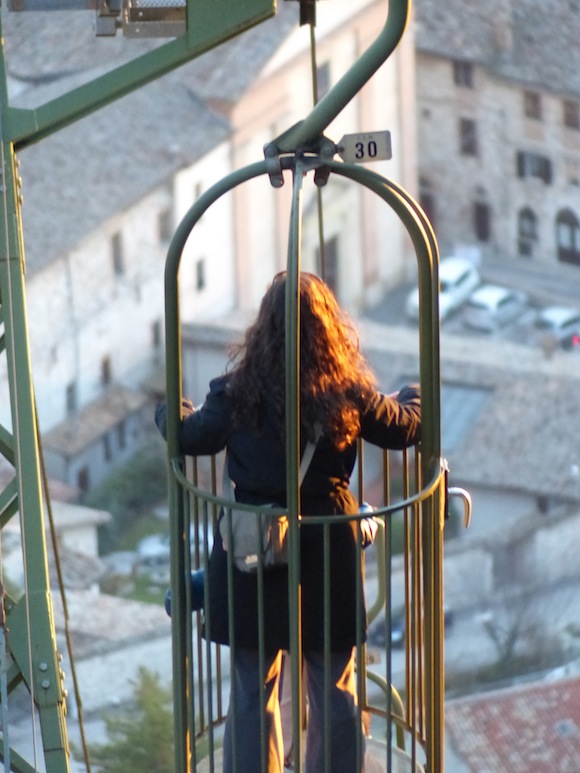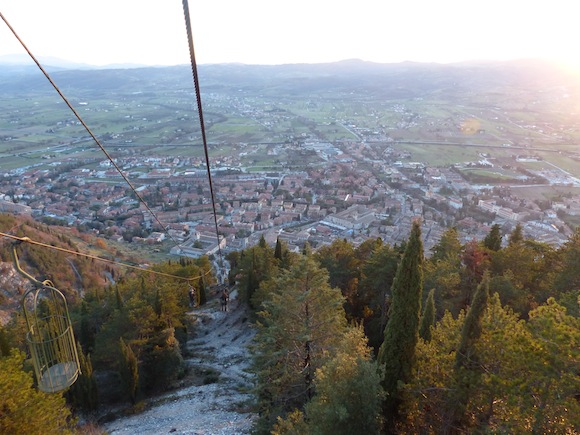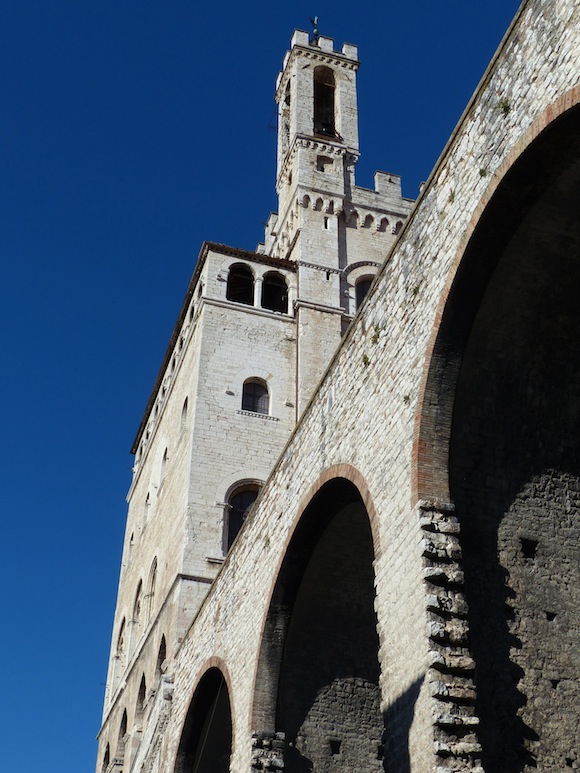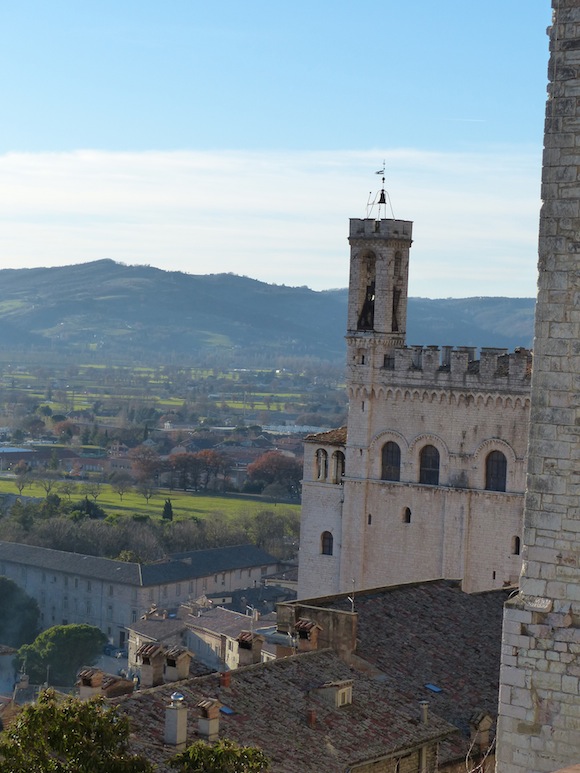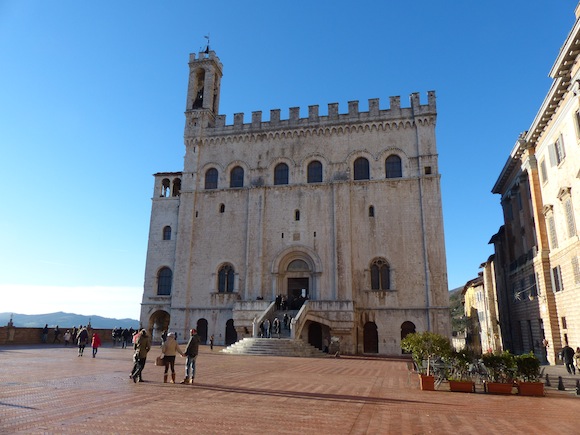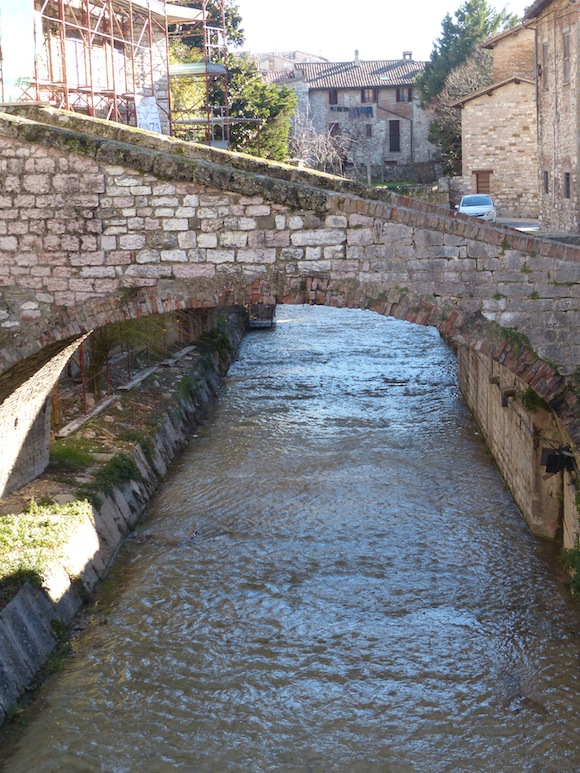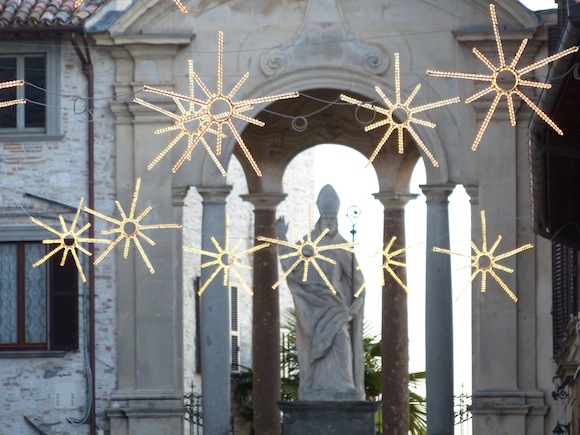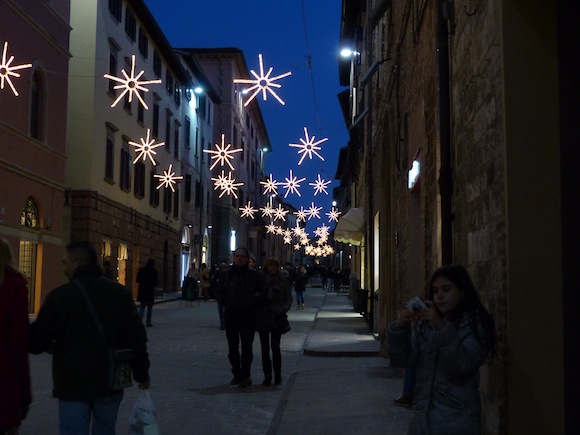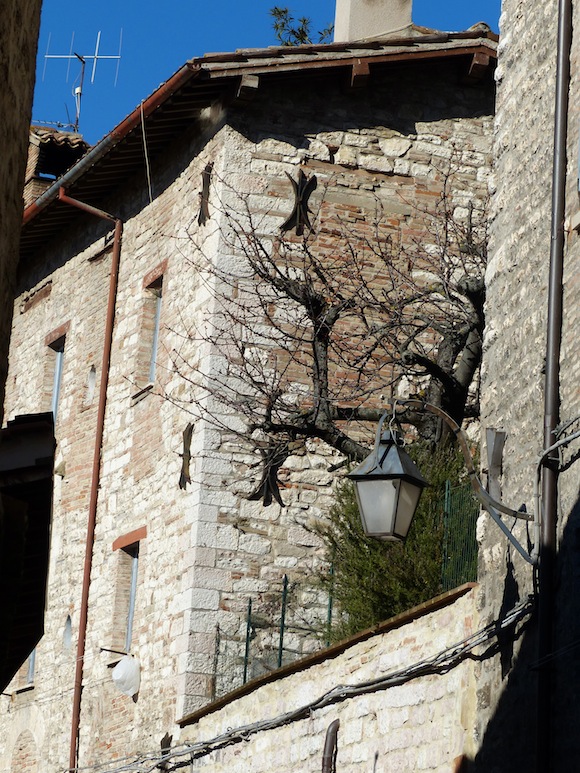Gubbio, Umbria
/Gubbio, the background
The city of Gubbio with its population of 30,000 people lies north of Spello, approaching the border of Le Marche. It has a few claims to fame. One, detritus from meteors indicate that at least one of these hurtling bodies from space thwacked Gubbio around the end of the dinosaur era. If a meteor shower was truly what caused the extinction of the dinosaurs, one of those reasons we don't have T-Rex's in our backyards landed in Gubbio.
Also, the area has been inhabited since the Bronze age, and the oldest ancient Umbrian texts (hammered on bronze tablets) describe the religion and government of Gubbio. Later, the city was inhabited by Romans, who built a theater and mausoleum that still remain, and moved the town down the hill (from where the religious activity was, as the hill itself was considered holy in pre-Roman times) and imposed a grid pattern to the roads.
Later came Guelph and Ghibbiline drama that I've never fully understood. Suffice it to say, Gubbio figured in the story.
Nowadays, Gubbio features a Christmas tree made of lights on the hill behind the city, and a funicular to take visitors to the top of the hill. Beyond that, the town is also known for its ceramics.
Our 2012 visit to Gubbio
Our visit was first remarkable because our drive in was halted by a traffic light. A traffic light! Haven't seen one of those in a long time. Italy loves its roundabouts, and we've grown accustomed to a slow and merge and arc and exit. Stopping in traffic was unusual. I think stoplights are what make Americans cranky.
Gubbio is…different. Siena attributes it to the fact that the landscape around it is brown and prickly and severe, rather than the welcoming hills of the rest of Umbria. Keith notes that it is laid out in a long pattern along the base of the hill, which gives it an unusual approach and vibe. I agree with both of those things. But it also feels shadowy. Walking along the base of the palazzo, with its cavernous arches, a dark, almost foreboding breeze twisted through me. It is beautiful. That is certain, but in a moody way. On one of our walks, we passed a plaque with a quote by Hermann Hess that described Gubbio as "disquieting". I agree. And I think the extra door phenomena only adds to the strange mystery of the place—the old houses have a regular door at street level, and then an extra door, narrow and a foot or two higher. Why? Nobody knows. Some say that it was for carrying out the dead. Some say it was an easy door to defend if strangers came midnight calling in medieval days. It is more than a little unsettling to be surrounded by doors with a secret purpose.
We had lunch at Osteria dei Rei, which was marvelous, and, true to form for this city, different. No primi, unfortunate for Nicolas who had been craving pasta. The menu mostly consisted of steaks, so four of us ate wonderful steaks with variations of balsamic, arugula, olive oil, and aged pecorino. Gabe ordered the Piatto dei Rei (King's Plate), which was a huge platter of antipasti, all fabulous. The bruschetta with crispy pork and the other with field mushrooms, the pecorino with truffles, the tomatoey polenta, the fried zucchini, the brustengola, and the beans were all unusual and stunningly delicious.
It was a great lunch with vibrant conversation. I had read an interesting article via Facebook about the secret to a happy life. Which was to stop focusing on liking yourself just as you are, but get off your rear and do something to impact the world in some way. What you do matters, and matters just as much as being a good person. In any case, it prompted spirited discussion about if the article's argument is true, and also, what do we bring to the world?
After lunch, we walked to the Roman theater, and marveled that there is this fabulous Roman ruins, right next to a basketball court. More walking and wandering, around the Palazzo dei Consoli to a beautiful piazza overlooking the valley. And through side streets, and up an elevator (yes, an elevator to a different level of town), along pathways to a church. A church with a glorious ceiling and lovely frescoes. And more than one rotting saint. I just don't get the Italian fascination for remains of saints. At first we thought these weren't real, just models holding reliquaries (pieces of saints, like the fingers) which is bad enough. But then we realized, no no… those are actually decomposing bodies. Now don't we feel spiritual and enlightened? Actually, we feel kind of queasy. Let's walk on.
As we walked in search of the funicular, we passed a crane, ubiquitous in these towns that seem perennially under renovation. I admitted to Nicolas my fear that the funicular would be like a crane. A basket for people, and the arm elevates and then swings the patron to the mountain. We laughed at my silliness. After all a funicular is like a tram that goes up the side of the mountain. Right? Right? Well, as it happens, my fearful imaginings were dreamy compared to reality. Which was a series of birdcages lofting people on ropes the width of Siena's embroidery thread, to careen up the cliff to the top. And, not only that, but you have to rush to get in your cage before it races up and away with half of you still trying to hang on. My palms started sweating. It occurred to me that no one in the world knew we were in Gubbio.
I'm not going to lie, it was pretty harrowing. Particularly over the towers where the birdcage rolled over the mechanism that made it bounce. And made me imagine the little hook that held us up popping clean off the cable, sending us to our demise. And at one point, we seemed to stop, and I was afraid we were going to be stuck there all night, or worse, go rolling backwards. When we exited, all safe and sound, my children's proud hugs warming me, I looked back down and was fairly certain I wasn't going to be able to manage going down the mountain. This might require serious grappa.
We walked along the ridge of the mountain, which was cold and windy, and entered the courtyard of another church. A church that contained not only the three gigantic saint statues that are lofted by burly costumed men and raced up the hill once a year for what passes for a sporting event in Gubbio, but also a huge, well-lit-glass casket with the remains Gubbio's own Saint Ubaldo. Only later did I find out that he was originally interred in the normal fashion, was exhumed at his canonization and found to be uncorrupted. I am here to tell you, he is plenty corrupted now. Ew.
Once we established that the increasing cold and decreasing daylight mandated our stopping stalling, we went back to the funicular station. We rewarded our stellar bravery in the face of peril with hot drinks all around. And then back through the streets, now bright with illuminated stars. So beautiful. We also saw that the mountain was covered with colored lights, that formed the giant Christmas tree, but it is so large we didn't see the whole thing until we were driving away. And then it was remarkable. On the highway, we could see flashes in all the cars in front of us, as everyone tried to capture this hugest of Christmas trees.
To Perugia for Dinner
Back over the mountains, and then to Perugia for dinner. Gabe keeps correcting our pronunciation of Perugia, so I'm even second guessing myself as I type it. Parking in Perugia was it's usual jumble, but we're practiced enough now that we only went the wrong direction on a one way street once, did one U-turn, and one time making a loop after whizzing past the lot. And then up all the escalators to Perugia, which was glorious with lights. Ubu Re, our dinner destination was empty, which made me question the fabulous reviews on TripAdvisor. But it was an exceptional meal. Absolutely exceptional. The chef took ingredients that we eat every day in Umbria, and gave them a modern twist. Mine was my favorite, a plate of crisp ravioli stuffed with ricotta and smoked prosciutto, topped with slivers of porcini mushrooms and dots of fabulous, sautéed eggplant on the plate. I can't even describe the ravioli, they were thick, but collapsed and melted immediately when I put them in my mouth. Exquisite and light and full of flavor. Siena and Gabe had a pappardelle made with mushrooms, in a cinghiale ragú. Gabe didn't like it, and I have no idea why. It had an earthiness, a resonance that was beautiful. Keith commented that he tasted juniper—green and flinty. I didn't taste it, but he reminded me that his palate is much better tuned into juniper than mine is. Ah, that's what all is martini drinking is for. Refining his juniper radar. Nicolas had a pasta in duck sauce, and Keith had an unusual lasagna. Fried sheets of cardoon, with chopped artichoke between the layers, topped with perfectly cooked and herbaceous chicken livers. I know it sounds odd, but it married perfectly. One secondo among all of us, really just because it sounded so good we wanted to try it. Pork ribs cooked in sagrantino. Nicolas's high praise? It tasted like pot roast. Very satisfying.
Tired of sitting in a restaurant, as Gabe became harder and harder to settle, and Siena amused herself with remembering stories of the bible and which characters each of us would play, we left before dolci. But this was Perugia, after all, so quite easy to pop into a chocolate shop. And, what was apparently a Christmas miracle, every single member of our family decided against the beautiful pralines and intriguingly playful chocolates and requested plain chocolate with hazelnuts. Perfect, an etto of each milk and dark chocolate.
And we walked beneath the mysteriously elegant blue orbs of Perugia, the mellow chocolate sweetening each step.
Want more insider tips on Umbria, Italy, and beyond? Sign up for my newsletter, the Grapevine, and you’ll get wanderlust stories, recipes, and sweet deals right into your email inbox once a month. Plus, as a special welcome gift, I’ll send you an e-copy of my bestselling novel, Santa Lucia. Imagine! In just a few moments, you too can be wandering an Italian village.
